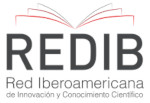O sabor das tradições: as farinhadas como processo cultural de preparo do alimento
DOI:
https://doi.org/10.17648/diversitas-journal-v6i1-1579Abstract
ABSTRACT: The work presented here rescues the production process of cassava flour in its socioeconomic cultural elements in the face of the current conjuncture of fierce contradictions caused by the great technological production of food and, in contrast, the perpetuation of hunger on a global scale. Based on the presented scenario, the main objective is to analyze, in view of the current conjuncture of development of the food industry and in return for the persistence of hunger, the cultural aspect of food preparation such as manioc flour. To this end, we intend to address issues such as: the process in which the preparation of cassava flour becomes the cultural tradition of flour and identify how the economic and social aspects are related to these cultural traditions of food preparation and consumption. For the construction of the text, bibliographical and documentary research was carried out, where the productions were analyzed based on the observation of the community daily life of rural communities in the municipality of Arapiraca, agresta Alagoas, among which the Remaining Community of Quilombo Carrasco. Emphasizing, in the midst of the contradictions and disparities of the contemporary food industry, a tradition such as the “floured ones, of great importance for the food and culture that has endured for generations, the present study, although still succinct, tends to boost the process of politicization of the act to eat in its multiple aspects in response to the increasingly current practices of violating the human right to quality food and food sovereignty and security.
KEYWORDS: Flour House; Identity; Food Security.
Metrics
References
BRASIL. Câmara Interministerial de Segurança Alimentar e Nutricional. II Plano Nacional de Segurança Alimentar e Nutricional (PLANSAN/ 2016-2019 REVISADO). Disponívelem:<http://www.mds.gov.br/webarquivos/arquivo/seguranca_alimentar/caisan/Publicacao/Caisan_Nacional/PLANSAN%202016-2019_revisado_completo.pdf >. Acesso em: 05 de agosto de 2020.
BRASIL. Política Nacional de Segurança Alimentar e Nutricional –PNSAN. Disponível em:<http://www.planalto.gov.br/ccivil_03/_Ato2007-2010/2010/Decreto/D7272.htm#:~:text=ALIMENTAR%20E%20NUTRICIONAL-,Art.,adequada%20em%20todo%20territ%C3%B3rio%20nacional. >. Acesso em: 03 de agosto de 2020.
VIZOLLI, Idemar; SANTOS, Rosa Maria Gonçalves and MACHADO, Renato Francisco. Saberes quilombolas: um estudo no processo de produção da farinha de mandioca. In.: Bolema [online]. 2012, vol.26, n.42b, pp.589-608. ISSN 1980-4415. Disponível em: <https://doi.org/10.1590/S0103-636X2012000200009>.Acesso em 05 de agosto de 2020.
VELTHEM, Lucia Hussak van; KATZ, Esther. A ‘farinha especial’: fabricação e percepção de um produto da agricultura familiar no vale do rio Juruá, Acre. In.: Boletim do Museu Paraense Emílio Goeldi. Ciências Humanas, v. 7, n. 2, p. 435-456, maio-ago. 2012.
JOIA, Paulo Roberto; GREGÓRIO, Eliezer Cece. A produção de farinha de mandioca pela agricultura familiar no município de Anastácio-MS. Disponível em: <https://periodicosonline.uems.br/index.php/GEOF/index>. Acesso em: 03 de agosto de 2020.
LINHARES, Anny da Silva; SANTOS, Clarissa Vieira dos. “A Casa de Farinha é a minha morada”: transformações e permanências na produção de farinha em uma comunidade rural na região do Baixo Tocantins -Pa. Disponível em: <https://periodicos.ufpa.br/index.php/agriculturafamiliar/article/view/4430>. Acesso em 07 de agosto de 2020.
PINHEIRO, Anelise Rizzolo de Oliveira; CARVALHO, Maria de Fátima Cruz Correia de. Transformando o problema da fome em questão alimentar e nutricional: uma crônica desigualdade social. disponível em: . Acesso em 08 de agosto de 2020.
BEZERRA, Islandia; SCHNEIDER, Sergio. Produção e consumo de alimentos: o papel das políticas públicas na relação entre o plantar e o comer. Disponível em <http://e-revista.unioeste.br/index.php/fazciencia/article/view/8026>. Acesso em 09 de agosto de 2020.
MULLER, Silvana Graudenz; AMARAL, Fabiana Mortimer; REMOR, Carlos augusto. Alimentação e Cultura: Preservação da Gastronomia Tradicional. Disponível em <https://www.ucs.br/ucs/eventos/seminarios_semintur/semin_tur_6/arquivos/13/Alimentacao%20e%20Cultura%20Preservacao%20da%20Gastronomia%20Tradicional.pdf>. Acesso em 09 de agosto de 2020.
SILVA, Juliana Klotz; PRADO, Shirley D.; CARVALHO, Maria Claudia V. S.; ORNELAS, Tatiane F. S.; OLIVEIRA, Patrícia França de. Alimentação e cultura como campo científico no Brasil. In.: Physis Revista de Saúde Coletiva, Rio de Janeiro, 20 [ 2 ]: 413-442, 2010.
AZEVEDO, Elaine de. Alimentação, sociedade e cultura: temas contemporâneos. In.: Sociologias, Porto Alegre, ano 19, no 44, jan/abr 2017, p. 276-307.
ONU. Fome aumenta no mundo e atinge 820 milhões de pessoas. Disponível em <https://nacoesunidas.org/fome-aumenta-no-mundo-e-atinge-820-milhoes-de-pessoas-diz-relatorio-da-onu/>. Acesso em 11 de agosto de 2020.
Downloads
Published
How to Cite
Issue
Section
License
Copyright (c) 2021 Ludmilla Maria Lima Santos, Gerlane Ferreira da Silva

This work is licensed under a Creative Commons Attribution 4.0 International License.
The Diversitas Journal expresses that the articles are the sole responsibility of the Authors, who are familiar with Brazilian and international legislation.
Articles are peer-reviewed and care should be taken to warn of the possible incidence of plagiarism. However, plagiarism is an indisputable action by the authors.
The violation of copyright is a crime, provided for in article 184 of the Brazilian Penal Code: “Art. 184 Violating copyright and related rights: Penalty - detention, from 3 (three) months to 1 (one) year, or fine. § 1 If the violation consists of total or partial reproduction, for the purpose of direct or indirect profit, by any means or process, of intellectual work, interpretation, performance or phonogram, without the express authorization of the author, the performer, the producer , as the case may be, or whoever represents them: Penalty - imprisonment, from 2 (two) to 4 (four) years, and a fine. ”


















